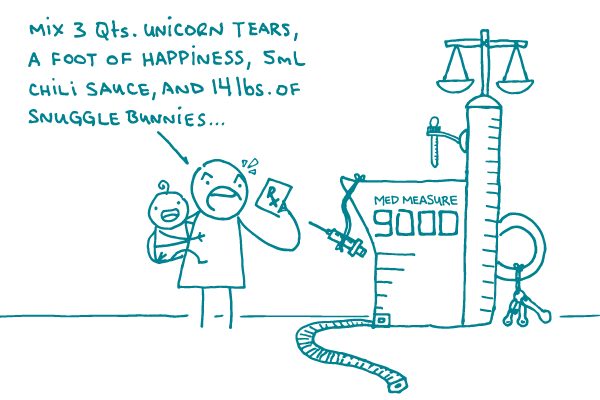
We’ve talked before about how measurements are confusing — often, just giving your readers an estimate is enough. But when it comes to measuring medicine, precision is key. So it’s too bad that current packaging and dosing tools, especially for medicines meant for children, aren’t always up to the task of clear communication.
Take a teaspoon, for example. People who bake know that’s a specific unit of measurement, but to plenty of other folks it’s just the smaller spoon in their silverware drawer. And if the medicine cup in the package is marked with both teaspoons and milliliters? Well, that’s a recipe for confusion.
Wouldn’t it be better if — instead of figuring out exactly which teaspoon or cup to use for your child’s medicine — you had a tool that was clearly marked, easy to use, and made specifically for giving liquid medicine to children?
Last year, a study published in Pediatrics concluded that parents are more likely to give the correct dose of liquid medicine with an oral syringe. The authors of the study make a compelling argument for a “comprehensive pediatric labeling and dosing strategy to reduce medication errors.” Hear, hear!
But until that happens, dear readers, we suggest sharing the following when communicating about giving medicine to kids:
- Use the cup, syringe, spoon, or dropper that comes with the medicine. Don’t use a regular kitchen spoon.
- Ask the pharmacist for an oral syringe to use instead of a cup or spoon.
- If you’re using a measuring cup, mark your child’s dose on the cup with a permanent marker.
- Follow these other safe dosing tips from the FDA.
The bottom line: Communicating about giving medicines to kids? Help prevent mistakes by describing the best tools for the job.
Browse recent posts